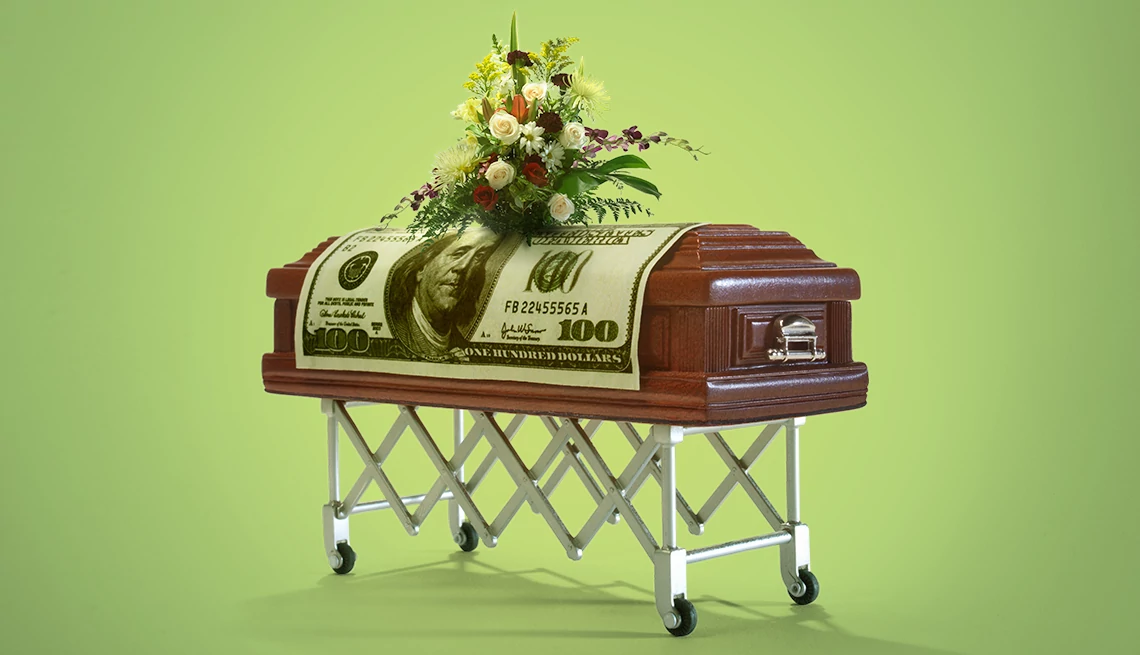AARP Hearing Center


In 2024, Danny Ray of Jacksonville, Florida, planned his own funeral. “I’ll tell you, it's one of the smartest financial moves I’ve made,” he says. His motivation was having witnessed families struggle to pull together the funds and coordinate the logistics when a loved one died.
“I did it to spare my family stress and financial pain,” says Ray, 51. “Now they know exactly what to do, and they won’t have to take out a loan or max out a credit card just to say goodbye.”
Gail Rubin, a grief educator in Albuquerque, New Mexico, can relate. “I am 66 years old and have pre-planned funerals for myself, my husband, my parents and my in-laws,” she says.
Her husband, David, died unexpectedly in April 2023. She remembers telling her brother-in-law, “I don’t know how people who haven’t planned ahead can do this,” says Rubin, who has authored three books on end-of-life planning. “I was in a fog, not in the best mental mindset for making these important decisions.”
According to a 2024 report from the National Funeral Directors Association (NFDA), the median funeral with burial costs about $8,300, while cremation with a memorial service averages $6,200.
Those numbers rise annually, the association's annual reports show. And they don’t factor in additional expenses like cemetery fees, headstones or flowers, says Jason B. Ball, a certified financial planner (CFP) in Portland, Oregon. “That total often exceeds $10,000 once everything is added in,” he says.
Leaving your family to plan and pay for your funeral after your passing can be emotionally and financially overwhelming. That’s why some older adults, like Ray and Rubin, choose to plan their own
“Any preparation in advance of a death eases stress at a time when very few people can think clearly,” says Ian Freeman, a Boca Raton, Florida-based financial adviser with Northwestern Mutual. Advanced planning can keep loved ones from having to make expensive and sometimes painful last-minute decisions, he says, “allowing them to focus on honoring and remembering their loved one.”
Here are 10 steps you can take to reduce funeral costs.
1. Set a budget and stick to it
Start by setting a realistic budget for the entire event, including services and items such as caskets or urns. “The most important thing to remember is that your funeral professional wants you to be open and honest about your budget,” says Allyse R. Worland, a funeral director in Indianapolis. “Just talk with us about what your financial situation is.”
Caskets, for example, can cost thousands of dollars, with some running $10,000 or more, depending on materials and craftsmanship. If you’re on a tight budget, this could be an opportunity to scale back by opting for a casket made from a less expensive material, such as pine, instead of bronze or copper.
“Keep in mind, very few people remember what a casket looks like,” says Kristin A. Meekhof, co-author of A Widow’s Guide to Healing. “Purchasing the most expensive one isn't necessary.”



































































More From AARP
Are You Afraid of Going Broke in Retirement?
You can take several steps to contain your expenses, manage your nest egg and invest wisely to help keep your savings from running dry
The Retirement Income Quiz You Can't Afford to Fail
The answers can help you retire more comfortably
Test Your Estate-Planning Smarts
See what you know about wills, trusts and powers of attorney
Recommended for You